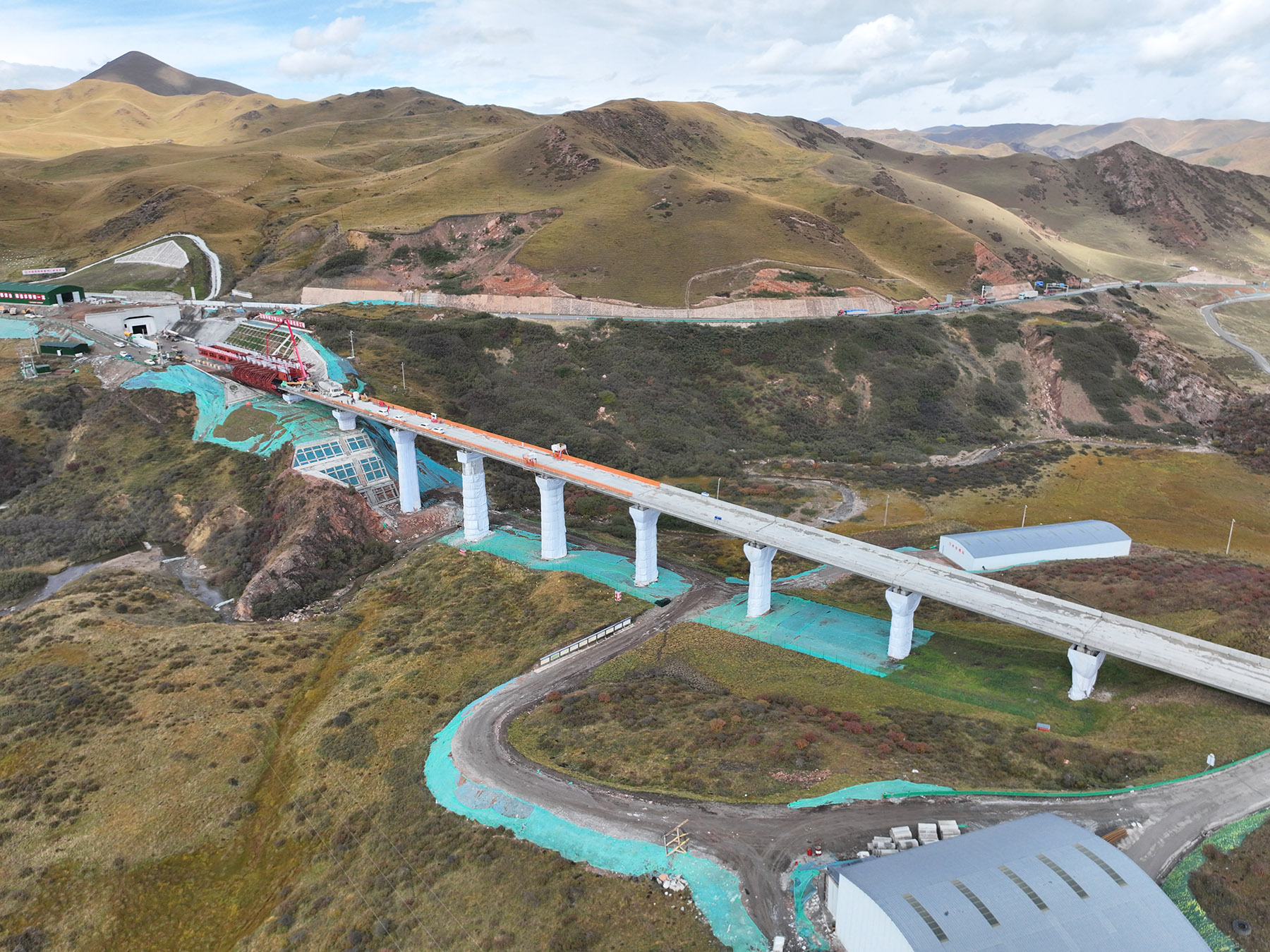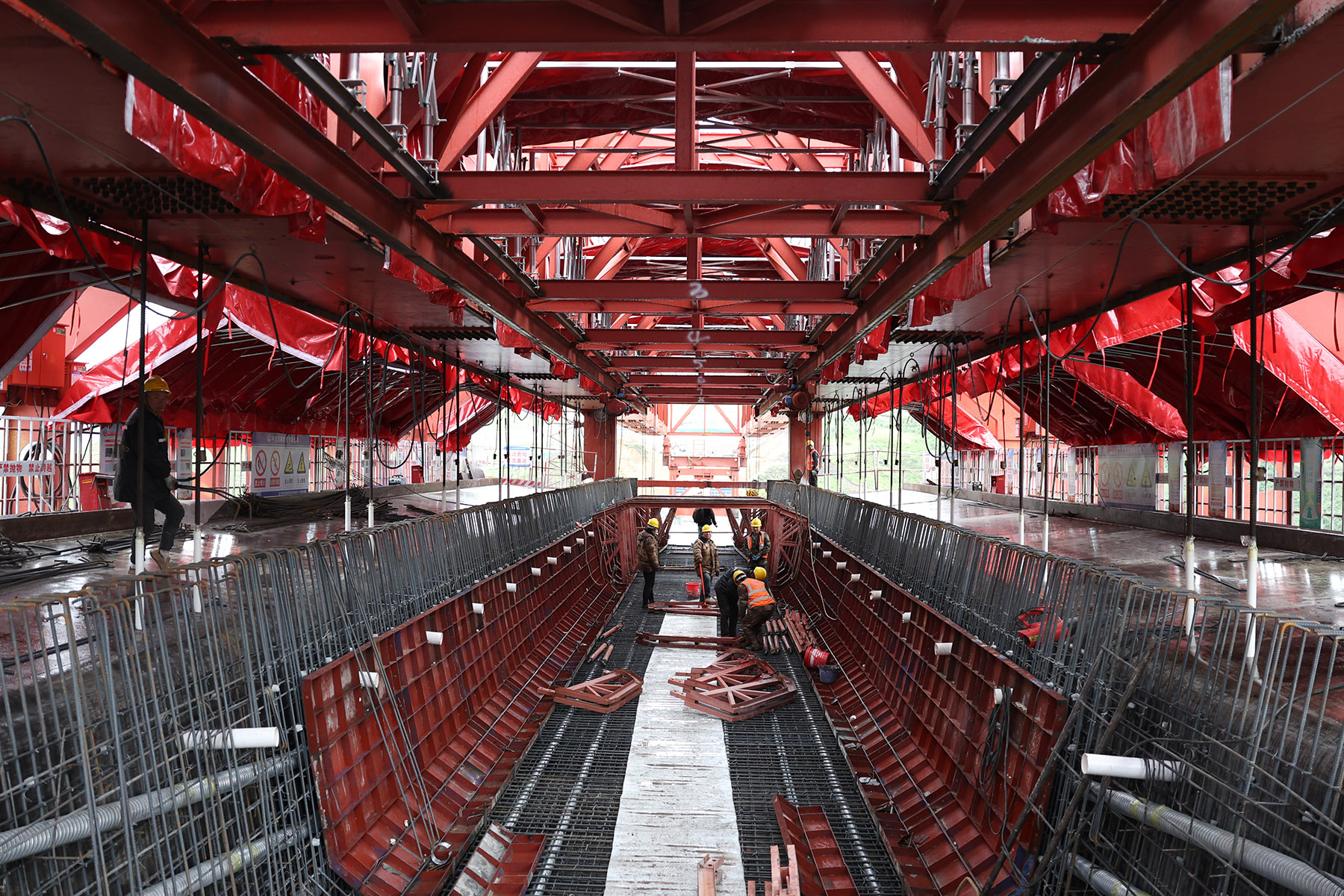Xining-Chengdu line boon for locals with faster travel, flow of products

For years, Gonpo Namgyal, a rancher in Luchu county, Northwest China's Gansu province, has been troubled by inconvenient local transport without railways and proper highways.
As a member of the Tibetan ethnic group, he aims to sell local agricultural and animal husbandry products, handicrafts and unique clothing in Gannan Tibetan autonomous prefecture to others outside his hometown of Lhamosi (Lhamo Monastery) town.
However, it takes him an hour to drive from his hometown to the county seat, two hours to the prefecture seat of Hezuo and five hours to the provincial capital of Lanzhou.
But good news is on the horizon as the Xining-Chengdu railway, which will pass through his hometown, has started construction, and upon completion he will need only 20 minutes to arrive at Luchu, 40 minutes to Hezuo and less than two hours to Lanzhou.
READ MORE: Beidou system set for large-scale applications
The railway runs from Xining, the provincial capital of Qinghai province, and after servicing Qinghai's Haidong and Huangnan Tibetan autonomous prefecture, it enters Gannan in Gansu, and Aba Tibetan and Qiang autonomous prefecture of Sichuan province, before arriving in Chengdu, Sichuan's capital.
With trains running at speeds of some 260 kilometers per hour and with an estimated total investment of 58.3 billion yuan ($8.05 billion), the railway will have newly built lines of 533.02 kilometers, including 173.38 km in Qinghai, 183.47 km in Gansu and 200.44 km in Sichuan.
Facilitating local travel
With some 745,900 residents, Gannan now administers Hezuo and seven counties including Luchu, Machu, Tebo and Xiahe.
Located in southwestern Gansu on the eastern edge of the Qinghai-Tibet Plateau, Luchu administers five towns, two townships and two State-run farms. It had 9,852 households with a total population of 38,478 by the end of 2023.
"We have many special products in Gannan produced on plateaus and lowland agricultural regions, as well as animal husbandry, such as yak alongside highland barley and winter wheat," said Gonpo Namgyal, noting that many agricultural and livestock products have high added value after good processing.
"At present, Tibetan fragrant pigs in Tebo, toasted barley flour in Luchu, cheese in Machu and air-dried meat in Xiahe are all well received in the market, and after the opening of the new railway, these products can be transported faster and become tourism products," he said.
He added that with faster transport, he can earn more.
In Luchu county, there will be three stations — Luchu, Tsecha and Lhamosi, said Xing Jiang, an office director from the Seventh Engineering of China Railway No 4 Engineering Group Co Ltd (CREC4), which is partially constructing the railway.
The Xining-Chengdu railway will also serve Huangshengguan station via the Lanzhou-Chengdu railway, which is also under construction, and then the two lines will eventually run as one line, Xing said.

Training Tibetan talent
Xing said that since CREC4 project employees started their construction work, they have also paid heed to providing local people of the Tibetan ethnic group with more opportunities.
Khamdrug Tso, 25, is a native of Lhamosi and joined the CREC4 project team at the recommendation of the township government in July 2022 upon her graduation from Sichuan Vocational and Technical College.
Starting with a job in material management covering the approval of on-site materials and the sorting of materials entering and leaving construction sites, Khamdrug Tso earned unanimous praise from her colleagues thanks to her good attitude, flexible and clear project development ideas, and hardworking spirit.
She said she has not only mastered some skills, but also helped improve her family's income. Moreover, she was proud of helping build a railway in her hometown.
"We all like her very much, as she is dedicated to her job," Xing said.
Xing added that CREC4's bid for the railway is located in Luchu as well as Zogye county in Sichuan, at an elevation of some 3,500 meters above sea level. With a total length of 26.97 km, the bid carries a contract price of 3.623 billion yuan and has a construction period of six years.
"Our project has four major challenges — construction coordination, construction organization, ecological protection difficulties and safety risks, and it has five unique characteristics — high altitude, cold weather (-30.6 C at extremes), complex geology, fragile ecology and multi-ethnic settlements," Xing said.
To cope with the harsh environment due to the cold weather and lack of oxygen, the project department has done a good job in the physical protection of all the employees, inviting the company's hospital to send a special medical examination vehicle to the construction site and conduct medical checks for them twice a year.
Anyone found unfit to work in the plateau region will be given special treatment at nearby designated hospitals, and employees can decide whether to continue working there or not, Xing said.
Wangchen Tso, a local divorcee of the Tibetan ethnic group with three children, was a cleaner for the CREC4 project. An anomaly was discovered in her kidney during a medical examination.
Suspecting that it was a tumor, a CREC4 doctor recommended a re-examination. Under the persuasion of the project department, she went to a large hospital and found that it was indeed a kidney carcinoma.
After treatment, one of her kidneys and part of her liver were removed, and now she is recuperating at home.
Wangchen said she was so grateful to the project department for her physical examination and assistance, enabling her to receive timely treatment.
Her income from the CREC4 job can help her and her three children enjoy a stable livelihood.
Previously, due to poor health awareness and difficult family conditions, locals were often reluctant to go to big hospitals for follow-up checks.
Boosting rural vitalization
Chigyung Tashi is Party secretary of Lhamosi and believes the new railway — as a major national infrastructure project — will help Gannan bid farewell to its history of having "no railway", and bring more visitors, goods and information to Gannan.
"With the new railway, our town will witness faster rural vitalization, which is a comprehensive 'five-in-one' project covering industrial, talent, cultural, ecological and organizational vitalization," he said.
Actually, CREC4 workers are helping in many ways beyond their construction duties, Xing said.
"For example, by consuming local foodstuffs and buying hardware and specialty products, we are helping promote consumption amid an industrial vitalization," he said, adding that hiring local graduates of the Tibetan ethnic group and helping train engineering and technical personnel are ways to facilitate talent vitalization.
By building shared bookstores and health checkup stations, they are helping boost local cultural vitalization, while by actively participating in planting tree seedlings, they are bringing about ecological vitalization, he said.
Furthermore, by enhancing the standardization of leased machinery and equipment, they are helping speed up organizational vitalization of the town, Xing said.
ALSO READ: Sichuan's railway construction expanding at faster pace
Xing noted that the total length of the Xining-Chengdu railway is 183.47 km in Gansu, including 69.65 km in Luchu, 91.85 km in Xiahe and 21.97 km in Hezuo.
Once operational, the Gansu section can link with the Sichuan section in Zogye, which is part of the tourism-rich Aba of Sichuan, he said.
With the full completion of the Xining-Chengdu railway as well as the Lanzhou-Chengdu railway, travel conditions for locals will be largely improved, and access times to three capital cities in Northwest China and Southwest China will be shortened remarkably, he said.
At the same time, connections between the Silk Road Economic Belt and the Yangtze River Economic Belt will be greatly enhanced, while the national strategy of developing the western region in the new era will be significantly promoted, he said.



